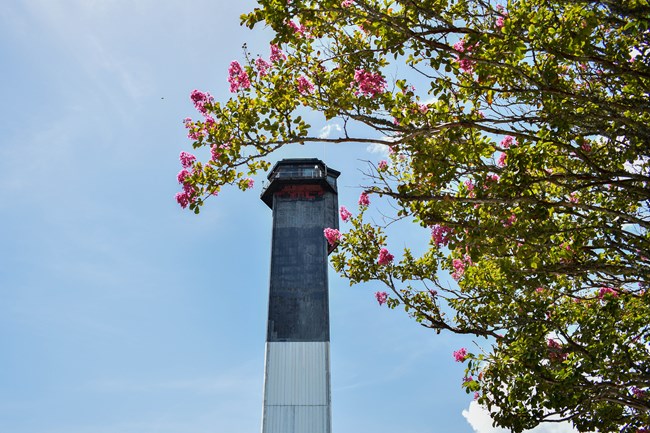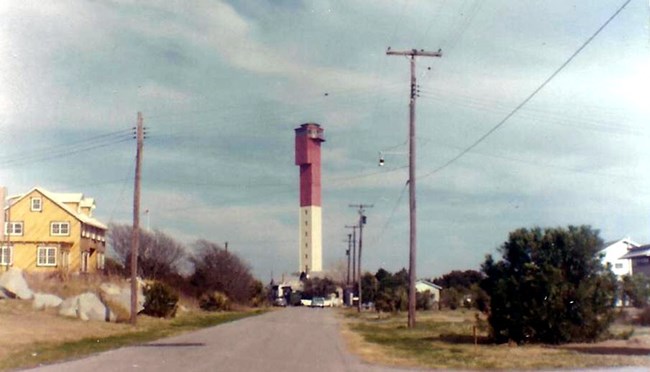
NPS/ N. Boyd A Unique LighthouseThe Charleston Light on Sullivan’s Island has guided mariners into the harbor since 1962. The distinctive lighthouse is part of the United States Coast Guard Historic District that includes historic buildings dating back to 1894 when the US Life Saving Service protected seafarers from dangers along the nation’s coastlines. The National Park Service protects and preserves the historic district. Earlier Navigation AidsIn the earliest days of navigation, fire was used to warn mariners of hazards along the coast and also to mark safe passage into protected harbors. The first beacon at the entrance to Charleston Harbor was a raised metal basket fi lled with oakum and pine pitch. It was ignited at night beginning in 1673, just three years after the British founded Charles Towne. In 1767 a permanent lighthouse was built on the south end of Morris Island at the main entrance to the ship channel. Confederate forces destroyed the lighthouse in 1861 to conceal the harbor entrance from U.S. forces. After the Civil War a new lighthouse was built on Morris Island in 1876. The construction of jetties to redirect the ship channel caused significant erosion on Morris Island. Today, the 158-foot tall Morris Island Light sits 1700 feet out to sea. When the lighthouse on Sullivan’s Island was built closer to the new main channel, the Morris Island light was decommissioned. It is owned by the State of South Carolina. Local non-profit Save the Light is working to preserve the historic structure. 
A Modern LighthouseThe new Charleston Light on Sullivan’s Island was dedicated on June 15, 1962. It was designed by architect Jack Graham while in the US Coast Guard. Graham studied under modernist Louis Kahn. Not a typical circular shape, the lighthouse is triangular, with steel girders for the framework and aluminum alloy for siding. The unusual design was chosen for of its ability to withstand winds up to 125 miles per hour. Its strength was demonstrated when it withstood Hurricane Hugo in 1989. Lighthouses have unique fl ash characteristics and paint designs, known as daymarks, permitting ships to distinguish one from another. The Charleston Light produces two flashes each 30 seconds in a distinctive pattern. Originally painted red-orange and white, the siding was repainted in its current black and white daymark pattern in response to complaints from island residents. One of the most technologically advanced for its time, the lighthouse has a service elevator. To access the lantern room, a 35-foot vertical climb on a metal ladder is required. When first illuminated, it was one of the strongest lighthouses in the world at 28-million candlepower. Five years later, it was reduced to 1.2-million candlepower and is still visible 27 miles off shore. Standing 162.5 feet tall, it is the last major lighthouse built in the United States. |
Last updated: August 11, 2022
